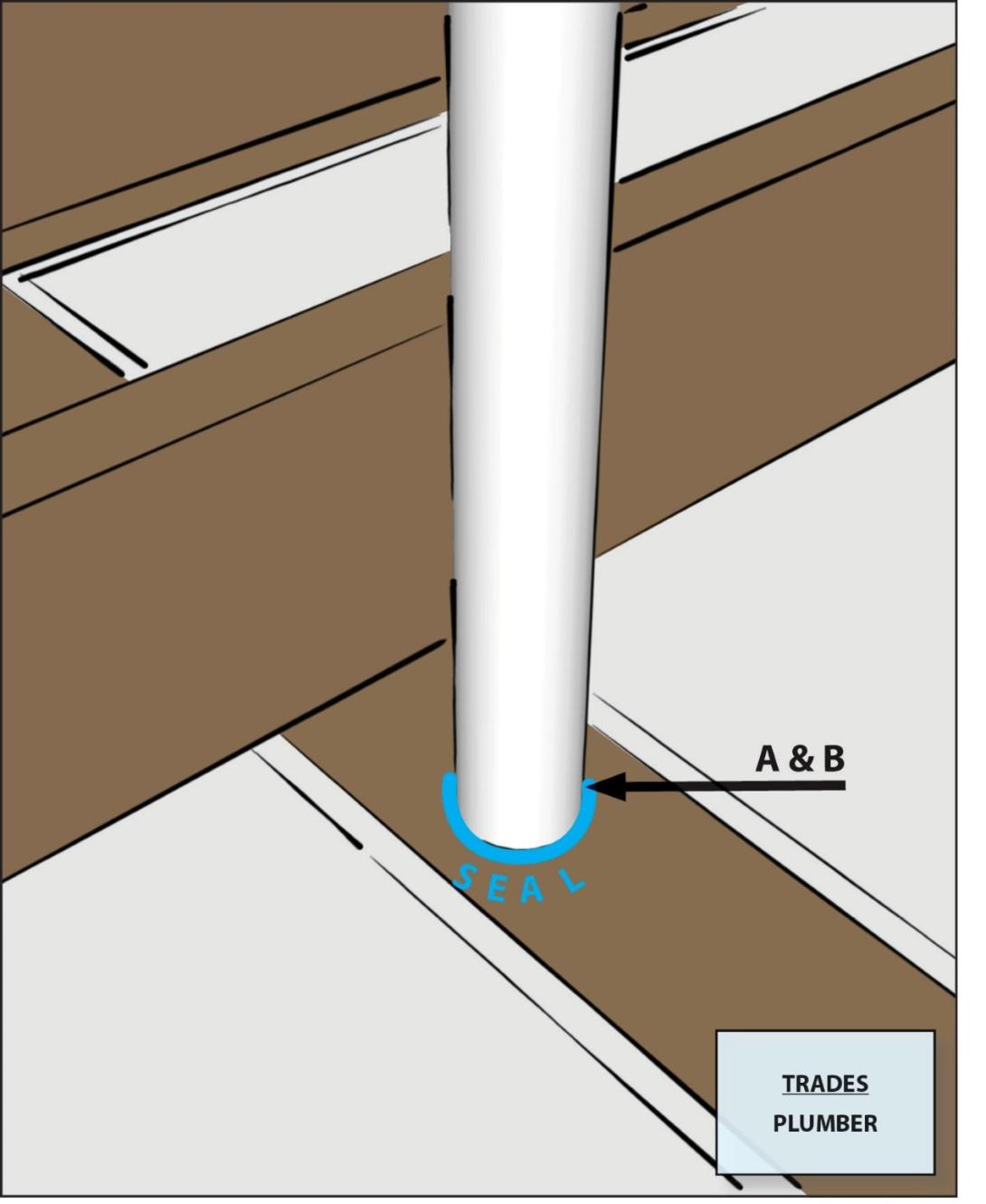
Plumbing
Vents Drains Waste Air Sealing Piping
Often, there are generous holes cut through subflooring, walls, bottom plates, and top plates for plumbing pipes and vent stacks. These gaps are frequently hidden from view in cabinets below sinks, beneath tubs, behind shower enclosures, behind washing machines and dishwashers, or within wall cavities. If not properly closed, vast amounts of air can pass through these gaps, pushed by pressure and temperature differences between conditioned and unconditioned spaces.
Air leaks from holes around plumbing and piping translate to energy losses. They could also allow warm, moisture-laden air into wall cavities or attics where it can condense on cold surfaces, creating problems. On the other hand, air leaking into the house from unconditioned sources, like the garage or crawlspace, can affect indoor air quality and cause drafts. Continuous air barriers are needed here—this means sealing all penetrations in exterior walls and in walls and floors adjoining unconditioned spaces.
Air-seal around all plumbing and piping through walls, ceilings, and flooring to keep conditioned air from leaking into unconditioned space. After the pipes and plumbing have been installed and before the drywall is completed, seal all gaps and holes to leading to unconditioned space with caulk or canned spray foam. For larger gaps, rigid blocking material can be cut to fit over the gap and sealed in place with caulk or spray foam.